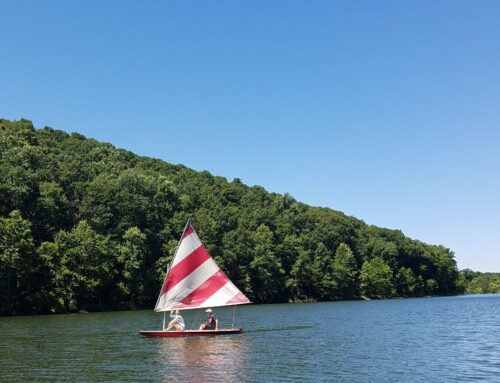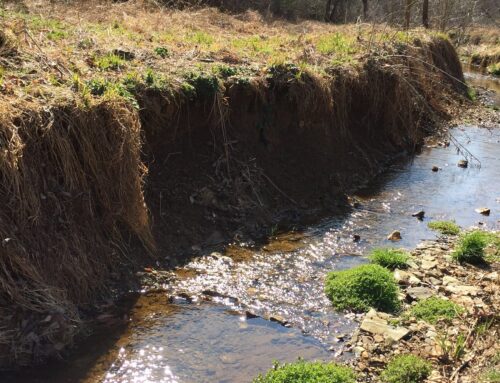In 2015, Tom Schueler and Anna Youngk of the Chesapeake Stormwater Network asked themselves: To what degree can urban stormwater BMPs (e.g., bioretention, constructed wetlands, detention ponds) reduce toxic contamination of waterways? In service to EPA’s Chesapeake Bay Program Toxic Contaminant Work Group, they undertook a massive literature review to try to answer the question. Out of thousands of potential urban toxic contaminants, their literature review focused specifically on 12 categories (Table 1). This list comes from an assessment of environmental risk in the Chesapeake Bay Watershed (USEPA et al. 2012).
| Table 1: Priority urban toxic contaminants in the Chesapeake Bay Watershed.1 | ||||
| # | Toxics Category | Individual Contaminants | Major Sources | Environmental/Health Impacts |
| 1 | PCBs | Total PCBs | Old transformers and capacitors (banned in 1977); old industrial areas; atmospheric deposition | Bioaccumulation in human, fish, and wildlife tissue; cancer |
| 2 | PAHs | Total PAH, benzo(a)pyrene, napthalene | Coal tar sealcoats on asphalt; coal burning; fossil fuel combustion; creosote treated wood; vehicle emissions; street solids | Cancer; cardiovascular disease; developmental impacts |
| 3 | Petroleum Hydrocarbons | TPH, oil and grease, benzene | Fuel leaks/spills; vehicle emissions; tire particles | Toxic to aquatic life at high levels |
| 4 | Mercury | Hg, Me-Hg | Atmospheric deposition (power plant emissions) | Bioaccumulation in human, fish, and wildlife tissue; central nervous system and kidney impacts |
| 5 | Urban Trace Metals | Cd, Cu, Pb, Zn | Atmospheric deposition; brakes and rotors; metal roofing; asphalt shingles; siding; downspouts | Toxic to aquatic life in dissolved forms |
| 6 | Other Trace Metals | As, Cr, Fe, Ni | Industrial operations; automotive batteries; fabricated metals; stainless steel | Drinking water contamination |
| 7 | Pyrethroid Pesticides | Bifenthrin, permethrin | Maintained landscapes | Toxic to aquatic invertebrates even at low levels |
| 8 | Legacy OC Pesticides 2 | DDT/DDE, dieldrin, lindane, chlordane | Erosion of previously contaminated soil | Bioaccumulation in vertebrates such as fish, eagles, and marine mammals |
| 9 | Legacy OP Pesticides 2 | diazinon, chloropyrifos | Erosion of previously contaminated soil | Toxic to aquatic invertebrates even at low levels |
| 10 | Plasticizers | Phthalates | Flexible PVC products (e.g., roof coating, cable coating, garden hoses and vehicle under-coating) | Endocrine disruption |
| 11 | Flame Retardants | PBDE | Computer and television wiring; plastics; foam cushions; insulation foams | Bioaccumulation in fish and wildlife tissue |
| 12 | Dioxins | Dioxins and furans | Waste incineration; legacy chemical manufacturing sites; paper mills; atmospheric deposition | Human carcinogen; other human and animal health impacts |
| Codes: PCBs = polychlorinated biphenyls, PAH = polycyclic aromatic hydrocarbons, PBDE = polybrominated diphenyl ether, TPH = total petroleum hydrocarbons, OC = organochlorine, OP = organophosphate, PVC = polyvinyl chloride.
Notes: |
||||
After sifting through over 250 reports and papers from all over the country, Tom and Anna realized that solid data on removal of most of these toxic contaminants are sparse. But, enough data are available to demonstrate that a lot of urban BMPs do capture and/or retain the following: polycyclic aromatic hydrocarbons, petroleum hydrocarbons, and urban trace metals (e.g., cadmium, copper lead and zinc). The limited available data also provide evidence that urban BMPs capture and retain polychlorinated biphenyls, mercury, other trace metals (e.g., arsenic, chromium, iron and nickel), pyrethroid pesticides, legacy organochlorine pesticides, plasticizers and polybrominated diphenyl ether (a flame retardant).
It is difficult to quantify precisely how well different types of urban BMPs remove toxic contaminants. But Tom and Anna noticed something. Many of the toxics found in urban areas have “sediment-like” properties when they get picked up by stormwater runoff – they are hydrophobic, are non-soluble, have a strong affinity for organic matter, and bind, adsorb, or otherwise become attached to sediment particles. In addition, both sediments and most urban toxics are relatively inert and persistent and have low rates of biodegradation. Both are also associated with fine- and medium-grained particles that can become suspended in urban stormwater runoff. Most importantly, both are generally subject to the same pollution “removal” mechanisms (i.e., settling and filtering).
So, they had a thought. How about we use sediment removal rates (for TSS) already assigned to each type of BMP as the initial benchmark for estimating toxic contaminant removal rates by those same BMPs? The basic idea is that the toxics removal rate can be adjusted upward or downward from the sediment removal benchmark, depending on the characteristics and properties of the individual toxics type. For example, the toxics removal rate should be adjusted lower than the sediment benchmark if any of the following conditions apply:
- A significant fraction of the toxic contaminant is present in soluble form (i.e., 25% or more).
- The contaminant is predominantly associated with very fine-grained particles (i.e., silt and clay particles less than 62 microns in diameter).
- Is prone to release after being trapped in BMP sediments (e.g., methylation in hypoxic and organic-rich environment of constructed wetland sediments).
By contrast, the toxics removal rate can be adjusted higher than the sediment removal benchmark when the toxic contaminant is:
- seldom or never found in soluble form,
- predominantly associated with medium or coarse-grained particles that are easier to settle (i.e., more than 250 microns in diameter), or
- documented to persist and accumulate within BMP sediments over time.
Table 2 shows how this plays out for the 12 urban toxic contaminants in question.
| Table 2: Comparison of BMP treatability for the 12 urban toxic contaminant groups. | |||||
| Toxics Category | BMP Removal Rate? | Measured or Estimated? | Behaves like Sediment? | BMP Retention? | Sediment Toxicity Concern? |
| PCBs | TSS | E | Y | Y | PR |
| PAH | >TSS | E | Y | Y | CR |
| TPH | >TSS | M | Y | Y | MR |
| Hg | >TSS | E | Y | Y | PR |
| UTM | <TSS | M | Y | Y | PR |
| OTM | <TSS | M | Y | Y | PR |
| PP | TSS | E | Y | y | CR |
| OCP | >TSS | E | Y | y | MR |
| OPP | <TSS | E | Y | ND | MR |
| Plasticizers | <TSS | E | Y | y | ND |
| PBDE | <TSS | E | Y | Y | ND |
| Dioxins | <TSS | E | Y | ND | ND |
| Removal Rate: >TSS = Higher than TSS removal TSS = Similar to TSS removal <TSS = Less than TSS removal M = Measured E= Estimated |
Y = Yes, based on strong evidence y = Yes, limited monitoring data provides support ND = No data available to assess PR = Potential risk CR = Clear risk MR = Minimal risk |
||||
Like most attempts to bean-count the impact of stormwater practices, it’s not perfect. But it does seem like a good place to start understanding which toxics that get into our urban runoff are more readily treatable by a variety of stormwater BMPs.
The current issue of our Watershed Science Bulletin delves into the literature review much further.
References
Schueler, T.R., and A. Youngk. 2015. Potential benefits of nutrient and sediment practices to reduce toxic contaminants in the Chesapeake Bay Watershed. Part 1: Removal of urban toxic contaminants. Annapolis, MD: Chesapeake Bay Partnership Toxics Workgroup. http://chesapeakestormwater.net/wp-content/uploads/dlm_uploads/2016/02/Toxics-Report-1.pdf
US Environmental Protection Agency, US Geological Survey, and US Fish and Wildlife Service. 2012. Toxic contaminants in the Chesapeake Bay and its watershed: Extent and severity of occurrence and potential biological effects. Annapolis, MD: USEPA Chesapeake Bay Program Office.
Laurel Williamson
Stormwater and Watershed Planner
Laurel is a Stormwater and Watershed Planner based out of Charlottesville, VA. Her past experience includes working for the County of Albemarle, VA on stormwater BMP maintenance inspections and coordinating the citizen water quality monitoring program and other projects for the Alliance for the Chesapeake Bay. She has a B.A. in Environmental Science and a B.A. in Environmental Thought & Practice from the University of Virginia. Beyond her work at the Center, Laurel enjoys making music, country living, and being with her family.







